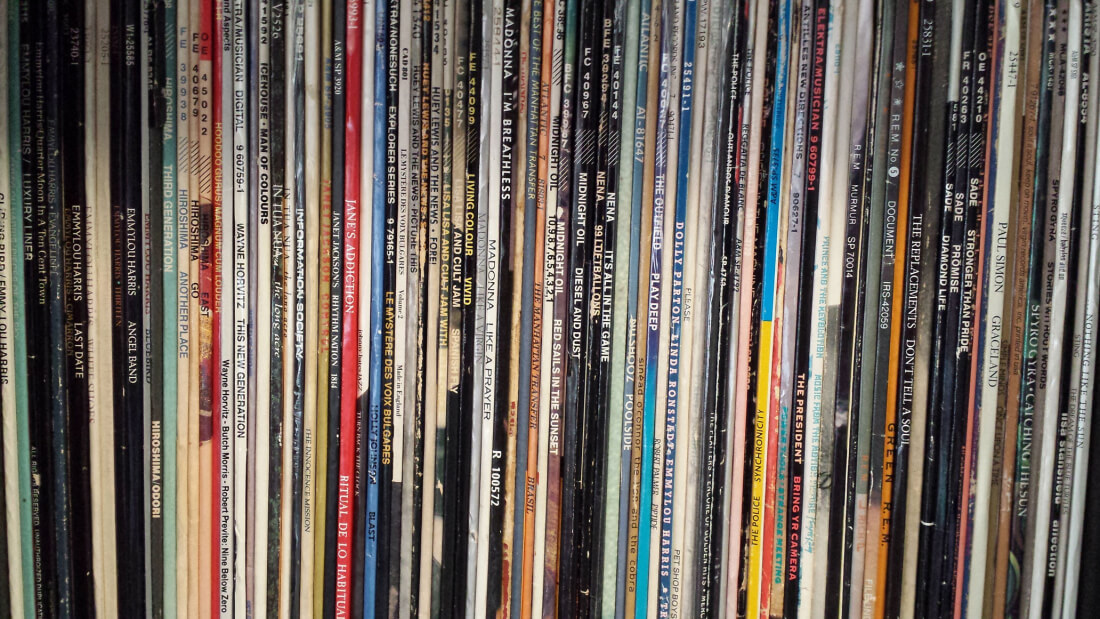Sometimes, it seems, digital isn't better. Sure, there are enormous benefits to working with media, files, and devices in the digital domain, but we are, after all, still living in an analog world. As human beings we still touch things with our hands, hear things with our ears, and see things with our eyes---all of which are decidedly (and beautifully) analog reception devices.
In fact, though an increasingly large percentage of our everyday experiences may start out or somehow exist in digital form, none of our interactions with these experiences actually occur in the digital domain. Instead---though it's very easy to forget---every one of these experiences happen in an extraordinarily high-resolution analog domain (otherwise known as the real world).
While it may seem odd, and maybe even a bit silly, to point this out, as our world becomes increasingly digitized, it's worth taking a step back to actually notice. It's also worthwhile to recognize that not all technology-driven pendulums of change always point towards digital. As technology starts to advance, logically it should actually start to become more analog-like.
Indeed, if you look at the history of many innovations in everything from computing to media and beyond, the evolution has started out with analog efforts to create or recreate certain types of content or other information. Many of these early analog efforts had severe limitations, though, so for everything from computer files to audio and beyond, technologies were developed to create, edit, and manipulate this kind of data in digital form.
For the last few decades, we've seen the evolution of digital files and the enormous benefits in organization, analysis, and creation that going digital has provided. Now, however, we're starting to see the limits even that digital technologies can bring for areas such as entertainment content and certain types of information. It's hard to really see how adding extra digital bits to audio, photo, and video can provide much in the way of real-world benefits, for example.
Along this path of technological development, many people have also noticed, or more precisely missed, the kind of physical interaction that human beings innately crave as part of their basic existence. The end result has been the rediscovery and/or rebirth of older analog technologies that provide some kind of tactile physical experience that a purely digital world had started to remove.
Along this path of technological development, many people have also noticed, or more precisely missed, the kind of physical interaction that human beings innately crave as part of their basic existence.
The best example is probably the case of vinyl records and turntables, which have seen a resurgence of interest even among Gen Z teens and millennials over the last several years. As someone old enough to have an original collection of vinyl, I should be able to remember and appreciate the potential of an analog audio experience. With decades of digital onslaught, though, it's easy to forget how good the audio quality on a decent turntable and sound system can be. It took a recent experience of someone spinning vinyl at an event I attended to remind me how good it could still sound.
There's also been a turnaround in, of all things, printed books. Following years of prognostications about the death of print, just this week there was also news that ebook readers and ebook sales were on the decline, while printed books were actually starting to see increases again. Admittedly, an enormous amount of ground was lost here, but it's fascinating to see that more and more people want to enjoy the analog physical experience that reading a paper book provides them.
Even beyond these examples, there's still an enormous amount of value that people put into the touch, feel, and experience of using digital devices. The way a device feels in your hand, how the keyboard touch on a laptop feels as you type, all still matters. Looking forward, advancements in both virtually reality (VR) and augmented reality (AR) are going to become highly dependent on some type of tactile, touch-based feedback in order to improve the "reality" of the experience they offer. Recently, we've also seen huge popularity towards some older "analog-style" vintage game consoles.
Musicians have always obsessed over the feel and touch of particular instruments and as our digital devices become the common instruments of our age, there's something to be said for the quality of the tactile experience they can provide. Plus, in the case of musical instruments, one of the biggest trends over the last several years has been the tremendous refound popularity in knob-based, physically controlled analog synthesizers.
Of course, above and beyond devices, there's the whole debate of returning more of our personal interactions back to analog form. After overdosing on purely digital interactions, there's growing interest and enthusiasm for cutting back on our digital time and focusing more on person-to-person analog interactions among people of all ages.
Obviously, we're not going to be re-entering an era of analog technology, as fun and nostalgic as that might be. But as digital technology evolves, it makes sense for technology-based products and experiences to try to recapture some of the uniquely tactile characteristics, feel, and value that only comes from analog.
Bob O'Donnell is the founder and chief analyst of TECHnalysis Research, LLC a technology consulting and market research firm. You can follow him on Twitter @bobodtech. This article was originally published on Tech.pinions.
